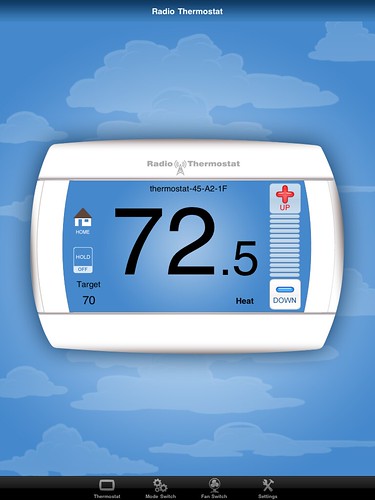Home automation is the process of making things in the home more efficient, smarter, and possibly even much cooler. There is a lot of technology that goes into making home automation so sophisticated, and there are some differences in the types of technology on the market today, so it’s important to have a basic knowledge of how everything
works.

Control Hub :
The devices in the home which become automated need to be controlled
through a central location. This is called the “control hub” and is
usually a simple device that mounts on the wall somewhere with a touch
interface, but recently tablets and smartphones have taken on the role
of the control hub making it mobile. The control hub is attached to a
network, and this network is important in the sense that the devices
must be able to communicate with the hub via the network or they will
not operate.
Controllers :
Controllers are simply the remote controls or smartphones that are
used on a daily basis to make all the home automation gadgets and
gizmos function. In some cases the controller looks similar to a
television remote while other controllers might have large touchscreens
or tablets that perform home automation functions. Again, with the
recent advances in broadband wireless technology and smartphone
applications, the ability to control everything universally through a
mobile device is making the home automation process much more
intuitive. One smartphone can take care of all the devices through the
home, whereas before the controller had to point at the device you
wanted to automate.
Devices :

Devices are the actual items that are under the control of the home
automation. The types of devices range in their size and scale,
but for the most part they are the typical everyday home items we use.
Things like door locks, dimmer switches, light switches, water
irrigation, thermostats, and even shade controllers are all of the
devices which can become automated. Each of these automated devices
will have network protocols built into them which control them under a
certain type of home automation network, and before we go any further,
we should probably explain exactly what type of networks are out there
these automated devices are running.
Networks :
Some of the home automation networks use the homes electrical power
to communicate, while other networks use wireless technology to
communicate with the central control hub. Here are some of the main
types of networks and their prominent features. Each have their
advantages and disadvantages, but the world is moving in a wireless
direction, so if home automation devices are not wireless and have
mobile access they are becoming severely dated. That said, home
automation networks which simply plug into the wall have their place in
the market today as well.
X10 :
This communication standard uses the homes existing wiring to signal
and communicate with the control hub. This is one of the oldest home
automation networks on the market, so there’s lots of infrastructure
and technology buildup around X10, but it’s getting a little bit old because of recent wireless advancements. X10 devices must “plug in” to
work.
Z–Wave :
This is a wireless technology that runs over a low power and can
communicate with a multitude of home automation devices. Z wave
technology devices can run on batteries making for some very innovative
products.
Zigbee :

This technology is much like Z–Wave, in that they use a low-power
wireless signal to communicate the control of automated devices.
Although Z–Wave and Zigbee are close in the way they work, they cannot
communicate with each other, so make sure you look at the label of your
home automated products before you buy, so you know you’re not
purchasing a product that can’t talk to your control hub.
Insteon :
Insteon technology is much like X10, it will use the existing power
wires and network throughout the home, but it is very reliable and
there’s a large resource of home automated products built on this
platform thus making it very user friendly, and with a host of
available product to shop from make it .
IP Networks :
Networks like this are usually connected to the broadband home
Internet system. Wi-Fi communication is controlled through the Internet
and the software that automates these processes can be an app or a
computer program. These devices do not need to be plugged in making
them very convenient.
Those are the major home automation networks you’ll see on the market.
There are other variations of these networks with slightly different
missions and altered names, so don’t get thrown for a loop if you see
something that is not on this list. If you’re going to be installing
home automation yourself then it’s important to pick a network with
lots of support and then go for it. If you’re using a third party
company to help you automate your home, they will likely be running on
one of the above mentioned networks.


